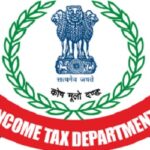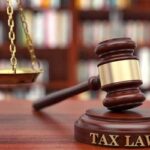About Income tax assessment
Understanding the various assessments under the Income Tax Law is essential for every taxpayer. It is mandatory for taxpayers to provide the details of their income to the Income Tax Department by filing their return of income. After the income tax return is filed, the Income Tax Department processes it and examines it for its correctness through a process known as assessment. This article will discuss primary assessment under the Income Tax Law, including assessment under section 143(1).
Assessment under Section 143(1)
Assessment under section 143(1) is a preliminary assessment that is referred to as a summary assessment without calling the assessee. This means that no detailed scrutiny of the income tax return is carried out at this stage. The purpose of this assessment is to check the income tax return for any arithmetical errors or incorrect claims that are apparent from any information in the income tax return.
The scope of assessment under section 143(1) is limited to making adjustments to the total income or loss based on the following criteria:
- Arithmetical error in the return
- Incorrect claim, if such incorrect claim is apparent from any information in the income tax return
- Disallowance of loss claimed if the income tax return of the previous year for which set-off of loss is claimed was furnished beyond the due date specified under section 139(1)
- Disallowance of expenditure indicated in the audit report but not taken into account in computing the total income in the income tax return
- Disallowance of deduction claimed u/s 10AA, 80IA to 80-IE if the income tax return is furnished beyond the due date specified under section 139(1)
- Addition of income appearing in Form 26AS or Form 16A or Form 16 which has not been included in computing the total income in the income tax return.
It is important to note that no adjustment can be made unless an intimation is given to the assessee of such adjustment either in writing or in electronic mode. Further, the response received from the assessee, if any, shall be considered before making any adjustment. If no response is received within 30 days of the issue of such intimation, the adjustments shall be made.
Procedure of Assessment under Section 143(1)
After making the necessary adjustments, the tax and interest, and fee, if any, shall be computed on the basis of the adjusted income. An intimation shall be prepared or generated and sent to the taxpayer specifying the sum determined to be payable by, or the amount of refund due to the taxpayer. The acknowledgment of theincome tax return shall be deemed to be the intimation in a case where no sum is payable by or refundable to the assessee or where no adjustment is made to the returned income.
It is important to note that as per section 234F, a fee shall be levied where the income tax return is not filed within the due dates prescribed under section 139(1). The fee for default in furnishing the income tax return shall be Rs. 5,000 if the return has been furnished after the due date prescribed under section 139(1). However, it shall be Rs. 1,000 if the total income of an assessee does not exceed Rs. 5 lakh.
Time-Limit
Assessment under section 143(1) can be made within a period of 9 months from the end of the financial year in which the income tax return is filed. This means that the taxpayer has to file the income tax return within the prescribed due date to avoid any late fee and to ensure that the assessment is carried out within the prescribed time-limit.
In conclusion, complying with the income tax law is a critical aspect of every taxpayer’s financial responsibilities. Understanding the different types of assessments under the Income Tax Law, including the preliminary assessment under section 143(1) is essential for taxpayers to avoid any potential penalties or legal consequences. It is advisable for taxpayers to seek the help of a qualified tax professional to ensure that their tax returns are filed accurately and on time to avoid any unnecessary hassle or financial loss.






